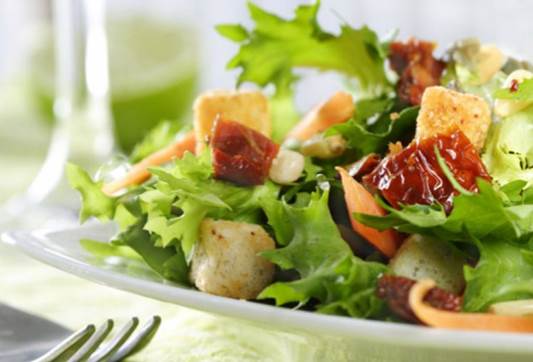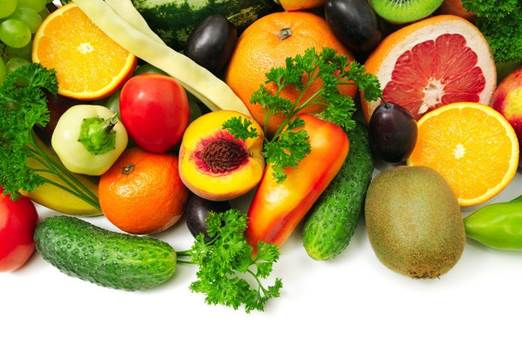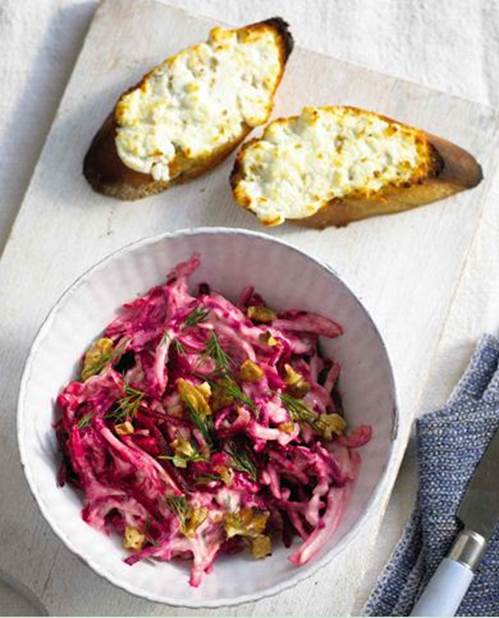Go meat-free and enliven your taste
buds with inspiration from an exciting new cookbook
‘Our recipes are designed to be both
accessible and flexible,’ says Coker. ‘Our aim is to encourage the reader to
experiment and adapt recipes to their own taste and store cupboard, without
needing too many hard-to-find or expensive ingredients or lots of experience in
the kitchen.’
As occasional meat-eaters, Coker and
Montgomery try to eat vegetarian food three or four times a week. ‘We believe
everyone’s diet could benefit from including a couple of meat-free meals each
week,’ says Coker. If you want to cut down on meat for health or budget
reasons, there are plenty of ideas here to tantalize your taste buds, so you
won’t even notice you’re not eating fish or meat.

As
occasional meat-eaters, Coker and Montgomery try to eat vegetarian food three
or four times a week.
‘Gradually build vegetarian food into your
diet, keeping it seasonal and simple,’ says Coker. If you already like Thai,
Mexican, or Indian cuisine, think of ways to still enjoy these flavors but
without meat. The trick to vegetarian cooking is to bring your dishes to life
with color, flavor and texture, says Coker. ‘Use dried spices to add base
flavor to a dish and fresh herbs for color and fragrance,’ she says.
Finding good protein sources when following
a vegetarian diet can be tricky, especially without relying heavily on cheese
and eggs. But Coker and Montgomery have sought to showcase a range of proteins
in this book, such as quinoa and tofu, plus high-protein vegetables such as
broccoli, spinach, corn, artichokes and peas. ‘A sprinkling of nuts and seeds
is another easy way to add extra protein to any dish,’ says Coker.
We’ll certainly be trying the veggie brunch
ideas, including the Potato and celeriac rösti and the Chickpea pancakes with
halloumi and red pepper salsa. Our mouths are watering with anticipation.

‘Use
dried spices to add base flavor to a dish and fresh herbs for color and
fragrance,’ she says.
Quick tip:
‘Let the ingredients speak for themselves, and take as much care in cooking
them as you would an expensive piece of meat for fish
1. Beetroot, celeriac and apple remoulade
Serve this deliciously crunchy remold ad e
with creamy goat’s cheese toasts, or as a side dish to any savory quiche or
tart.

Beetroot,
celeriac and apple remoulade
Serves: 4
Cooking time: 15 minutes
Per serving:
483 calories; 14g protein; 26g fat (7g saturated fat); 49g carbohydrate (11g
sugar); 8g fiber; 2g salt
·
Grated zest and juice of 1 lemon
·
5 tbsp mayonnaise
·
2 apples, unpeeled and grated
·
1/4 celeriac, peeled and grated
·
1 garlic clove, crushed
·
2 tsp fresh dill, finely chopped, plus extra to
serve
·
2 tsp Dijon mustard
·
1 tsp horseradish cream
·
2 small beetroots, peeled and grated
·
A handful of chopped walnuts (optional)
Goat’s cheese toasts
·
1 crusty baguette
·
100g goat’s cheese
·
A drizzle of olive oil
To make the remoulade, put the lemon zest
and most of its juice in a bowl with the mayonnaise. Add the remaining lemon
juice to a bowl of cold water and put the apple and celeriac in the water so it
doesn’t discolor.
Add the garlic, dill, mustard and
horseradish cream to the mayonnaise and season to taste with salt and pepper.
Drain the celeriac and apple and stir them through the mayonnaise mixture,
together with the grated beetroot.
To make the goat’s cheese toasts, cut the
baguette into slices on an angle, spread one side with the goat’s cheese, then
drizzle with olive oil. Toast under the grill until golden.
Serve the remoulade scattered with chopped
walnuts and sprigs of dill, and the goat’s cheese toasts on the side.